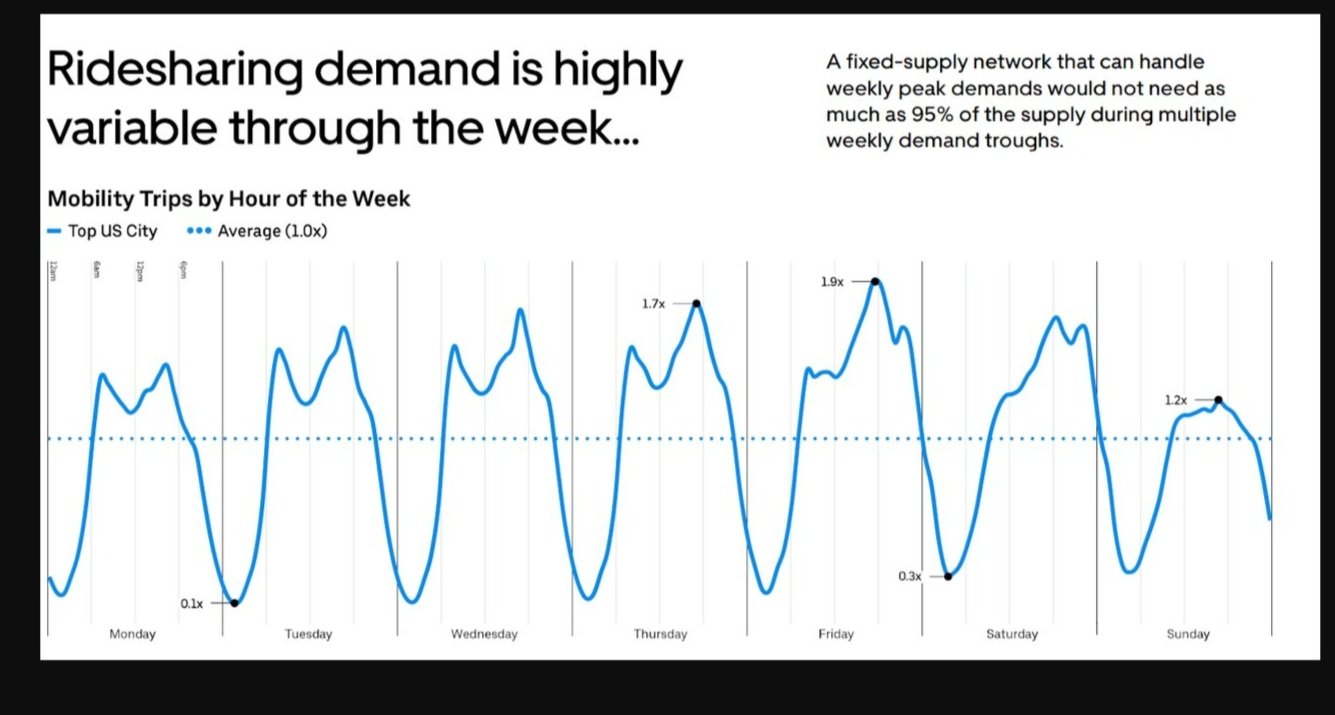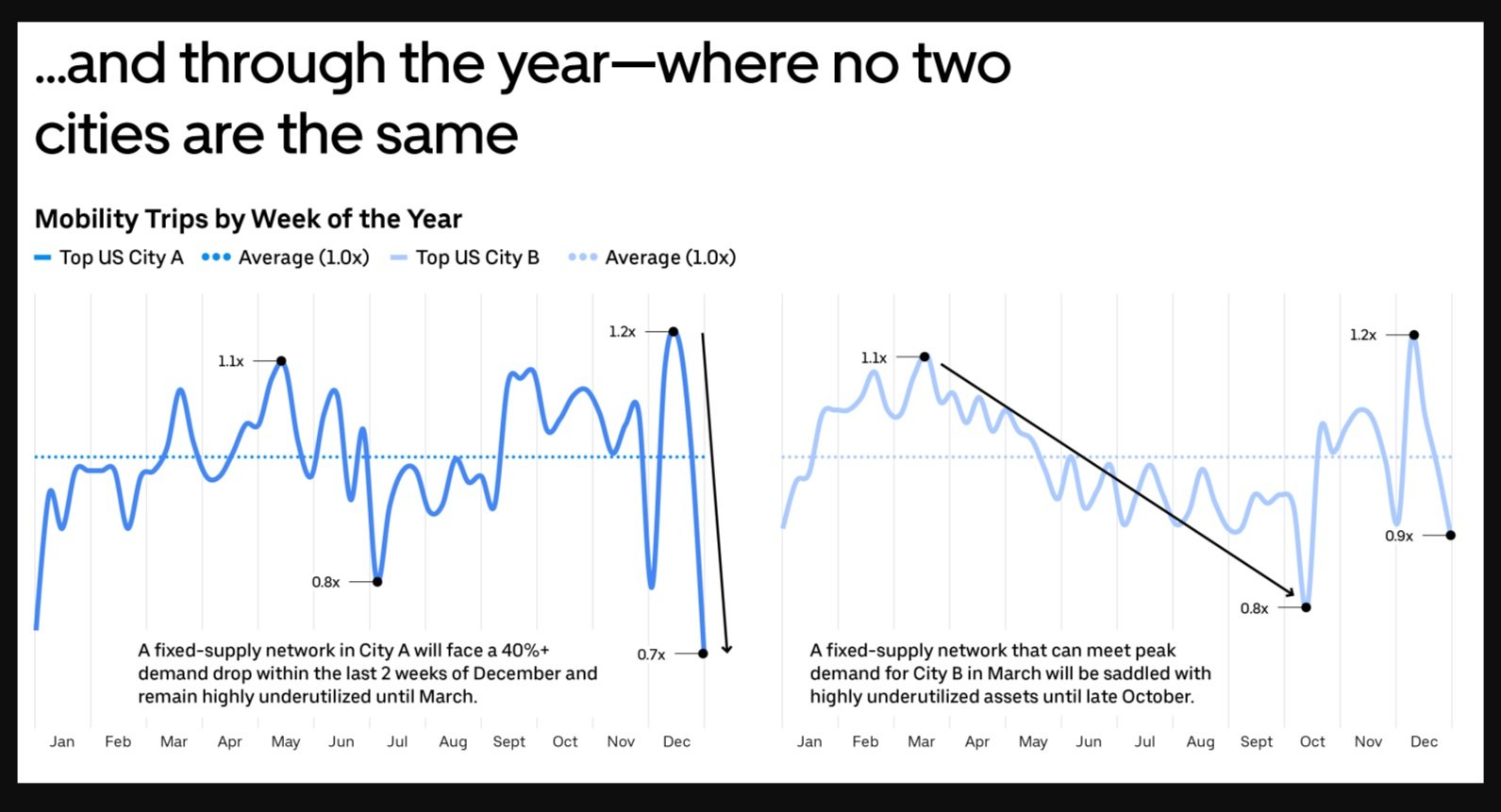Overcoming Uber’s EARLY Seasonality ChallengeS
Uber was beginning to launch new markets at a breakneck pace in 2015. Unlike in its first few years, Uber was now beginning to attempt to launch markets remotely, rather than relying on namely in-the-field marketing teams to generate interest. Sam’s job was to help these remote operations teams coordinate advertising in these new cities.
As that work was ramping up though, it was clear that markets across the United States, new and relatively mature, needed their advertising to be more closely aligned with operational needs and evolving, often seasonally-driven changes in the marketplace.
Some markets needed more drivers in the Winter (e.g., in the Northeast), while other cities tended to need more drivers in the Winter (e.g., in the Southeast). These seasonal trends were just emerging given that Uber’s most mature markets had only started a few years ago. As we better understood the natural fluctuation of drivers and riders throughout the season, Sam designed the dashboard and media optimization framework that allowed Marketing and Operations to align on advertising budgets in a way that finally baked in operational needs. This work immediately allowed Uber to begin saving millions on dollars on advertising, and marketplace efficiency gains through more carefully targeted marketing investments.


As this approach was further refined over the years, Sam would go on to help construct Uber’s first modeling for pairing advertising investments with changing seasonal demands. This modeling further improved marketing budget allocation efficiency at Uber, and would be scaled across Uber’s business verticals around the World.
